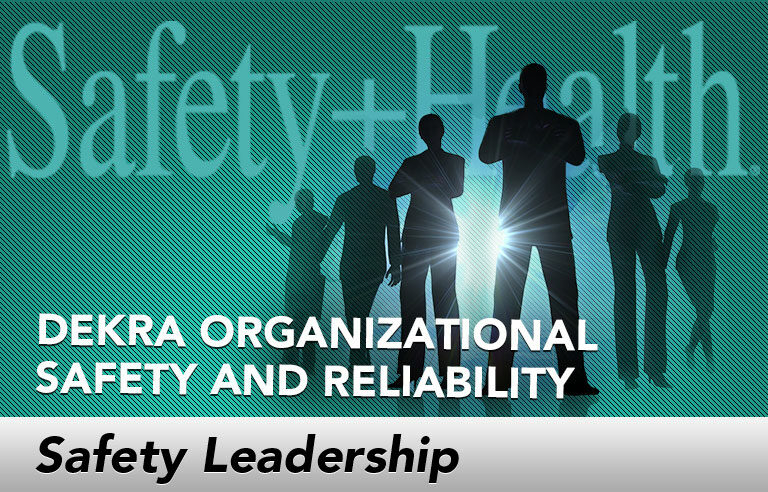Safety Leadership: 3 things leaders do to create a good safety strategy

Editor’s Note: Achieving and sustaining an injury-free workplace demands strong leadership. In this monthly column, experts from global consulting firm DEKRA Insight share their point of view on what leaders need to know to guide their organizations to safety excellence.
Organizational expert Warren Bennis once said, “Leadership is the capacity to translate vision into reality.” Translating safety vision into a reality where continually reducing exposure is an organizational value is a true test of leadership. It is a big undertaking for the entire executive team. It requires leaders to set the stage for cross-functional collaboration and focus on those critical areas and behaviors essential for a culture that supports continuous improvement.
Strategy itself is simply a plan for attaining a desired end. Well-developed strategy dictates tactics, the day-to-day activities and decisions that will help achieve that end state. In crafting and deploying safety strategy, we have the advantage of a moral imperative of keeping people out of harm’s way. That does not mean it’s easy. Its success or failure depends on the actions of the leaders who drive it. While every situation is different, we see successful safety leaders doing the following:
They articulate the big picture. As leaders, we tend to jump into the action – it’s part of our DNA. But this action orientation can hurt us if we focus on a “quick fix” or a specific discipline (employee engagement or data management systems) or a specific outcome (injury rates). For effective strategy development, leaders need to step back and understand the multidimensional nature of safety and articulate how the different disciplines and management systems interact with one another. Being able to see and focus on the context in addition to the individual parts (e.g., how culture influences process safety, or how data management helps – or hurts – safety enabling systems) is critical to creating a strategic plan that will produce consistent, comprehensive results.
They plan for barriers – and strengths. The execution of strategy depends on successfully navigating the formal and informal “rules” and ways of working that truly determine what people do and how. Successful leaders help their teams answer the question: “What will help us and what will hurt us in achieving our goals?” Answering the question may require looking at new sources of information and new avenues for change. In some organizations the safety data and analysis available may be inadequate for understanding the risk for catastrophic events or life-altering injuries. In other organizations, the reporting structure may mean supervisors are well-positioned for communicating new safety procedures. Knowing what you have to work with will help you ground any strategy with realistic expectations for what’s needed in time and resources. Each organization’s unique strengths (and barriers) determine the pillars of their safety strategy.
They define clear expectations. Although strategies are specific to the organization, effective strategies include clearly defined objectives for every element or pillar of strategy with accountable sponsors who are often supported by ad hoc teams. These objectives tie directly to accomplishing the vision of continuous safety improvement. Successful leaders help everyone see the connections and make them meaningful. Leaders ensure employees and business partners see the value of supporting their piece of the strategic plan. It is often helpful to have the support of the HR and corporate communications teams to consistently and clearly reinforce the right message by highlighting early and meaningful successes.
Realizing a vision
What distinguishes a strategic approach to safety from the more traditional tactical approach is, specifically and unavoidably, the actions of leaders. What leaders do will either lead to a sustained change or a wave of activity that comes and goes without lasting impact. Honing your personal ability to influence, engage and inspire others will go a long way toward realizing your vision for an organization that demonstrates its value for human life in the way it conducts business every day.
This article represents the views of the author and should not be construed as a National Safety Council endorsement.
 Ted Apking, Ph.D., is president, organizational safety, of DEKRA Insight, a global safety consulting, testing and advisory firm. A leader in human-performance technology, Ted helps executives understand and apply the principles of behavioral science to successfully implement critical strategic initiatives.
Ted Apking, Ph.D., is president, organizational safety, of DEKRA Insight, a global safety consulting, testing and advisory firm. A leader in human-performance technology, Ted helps executives understand and apply the principles of behavioral science to successfully implement critical strategic initiatives.
Post a comment to this article
Safety+Health welcomes comments that promote respectful dialogue. Please stay on topic. Comments that contain personal attacks, profanity or abusive language – or those aggressively promoting products or services – will be removed. We reserve the right to determine which comments violate our comment policy. (Anonymous comments are welcome; merely skip the “name” field in the comment box. An email address is required but will not be included with your comment.)

